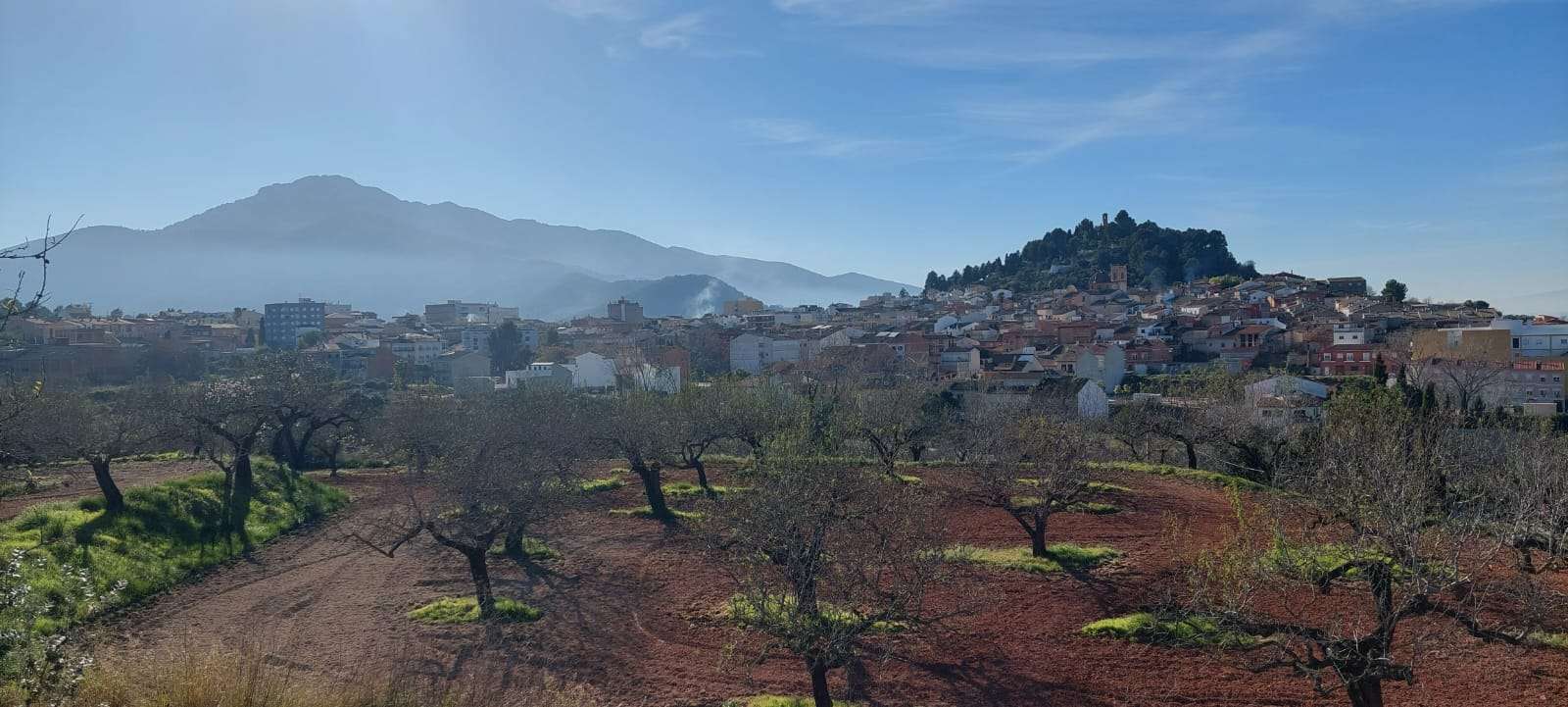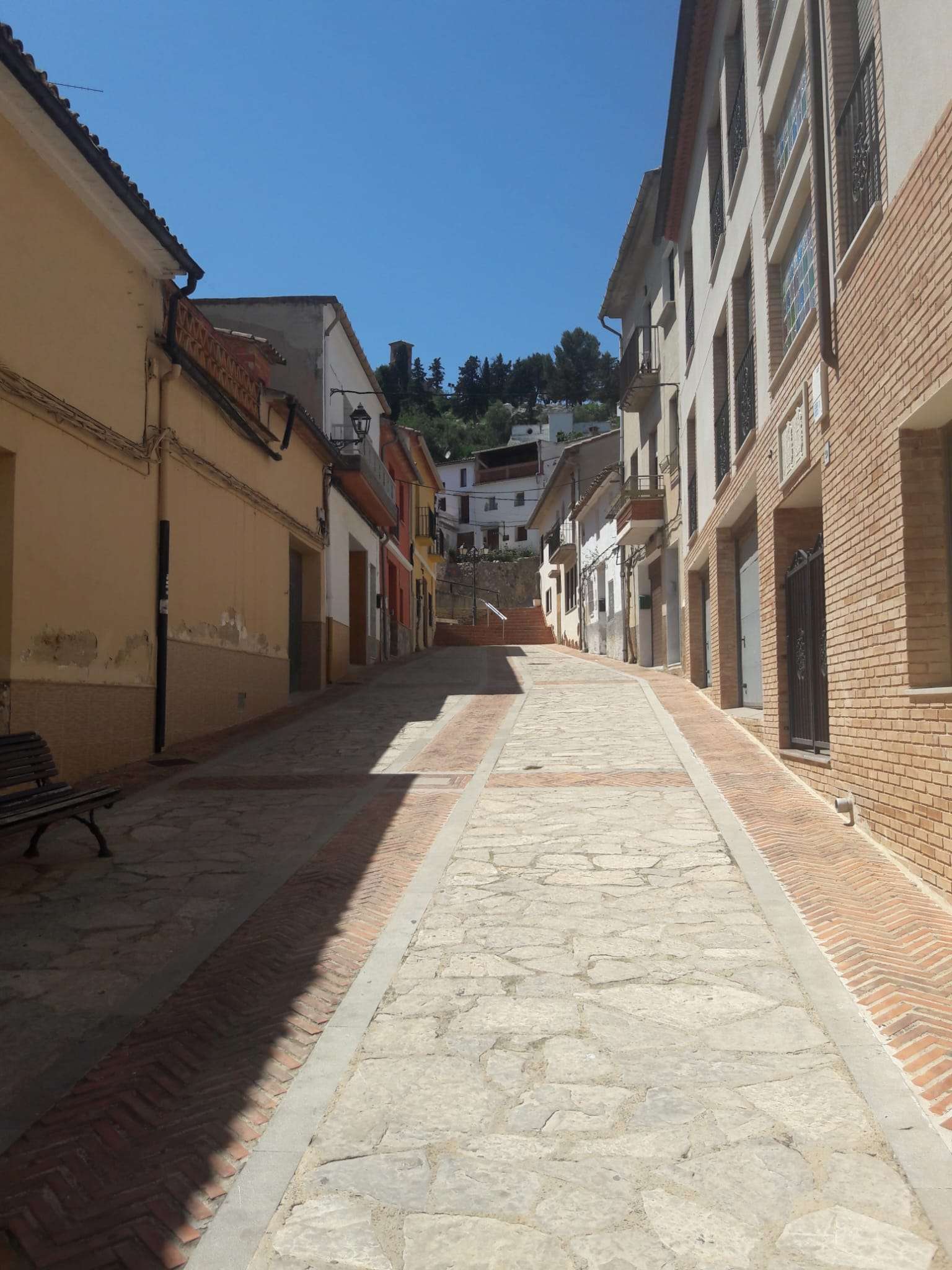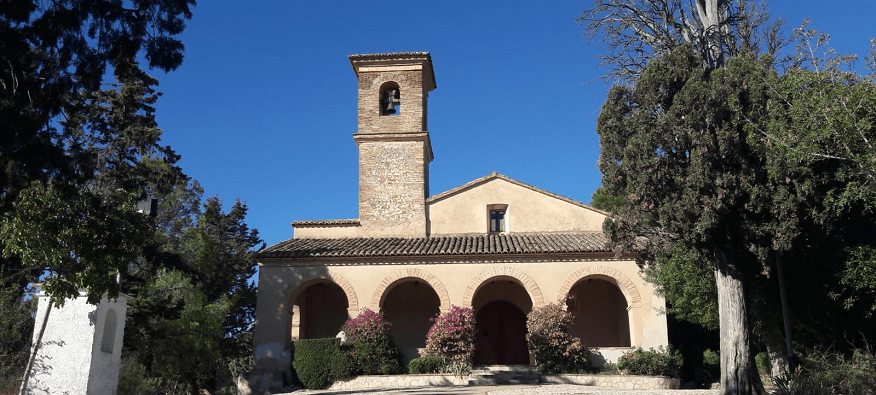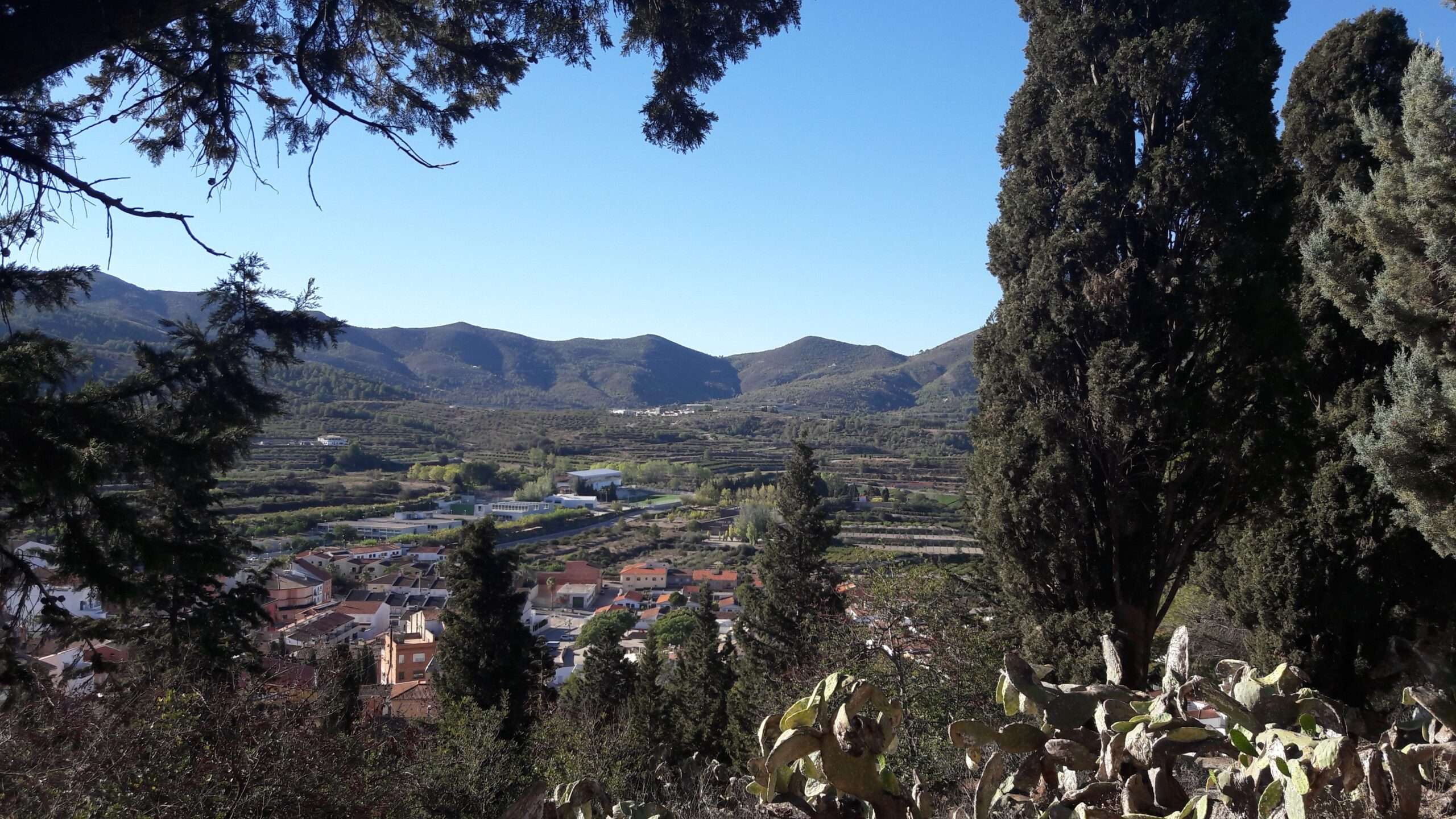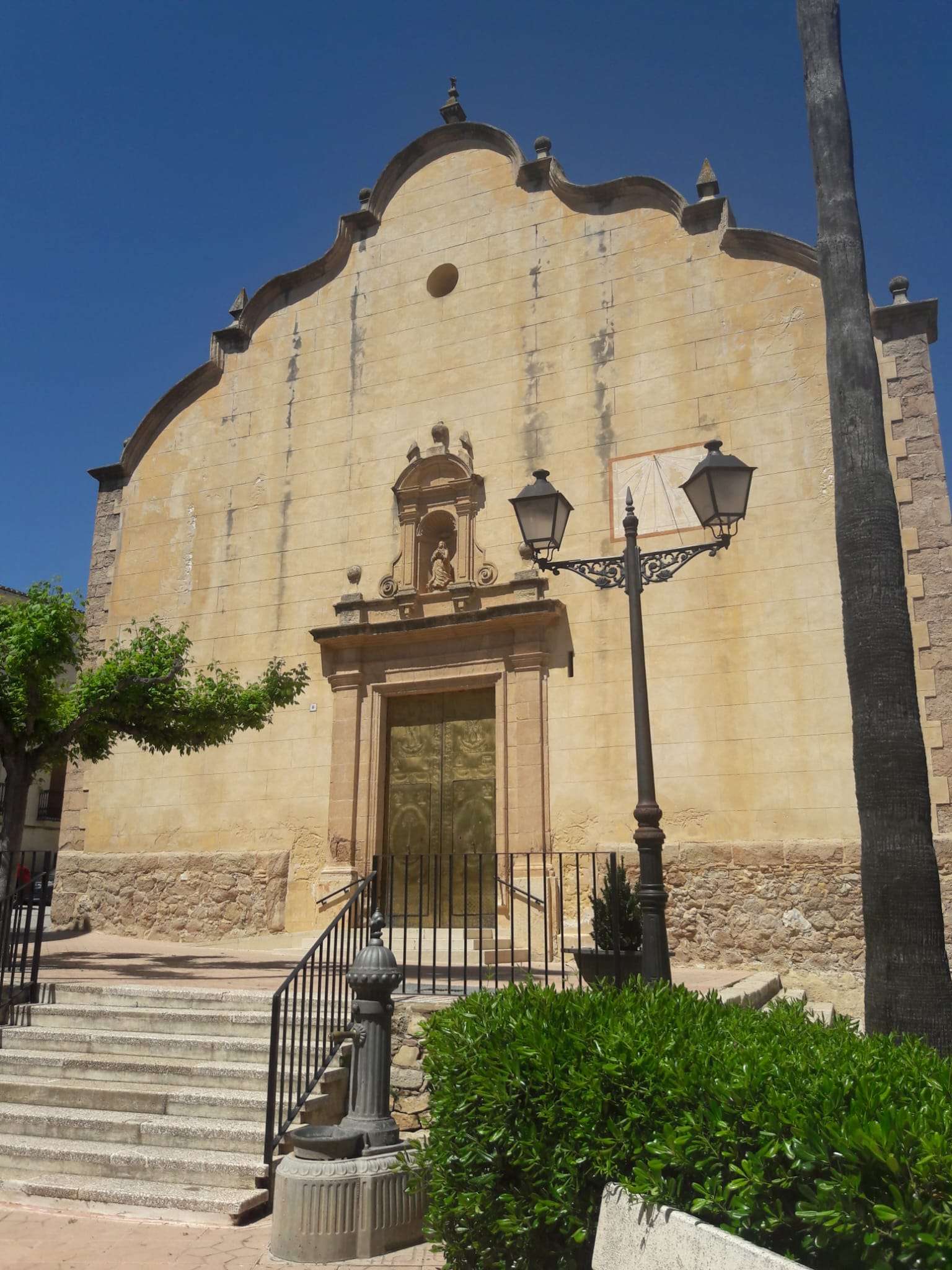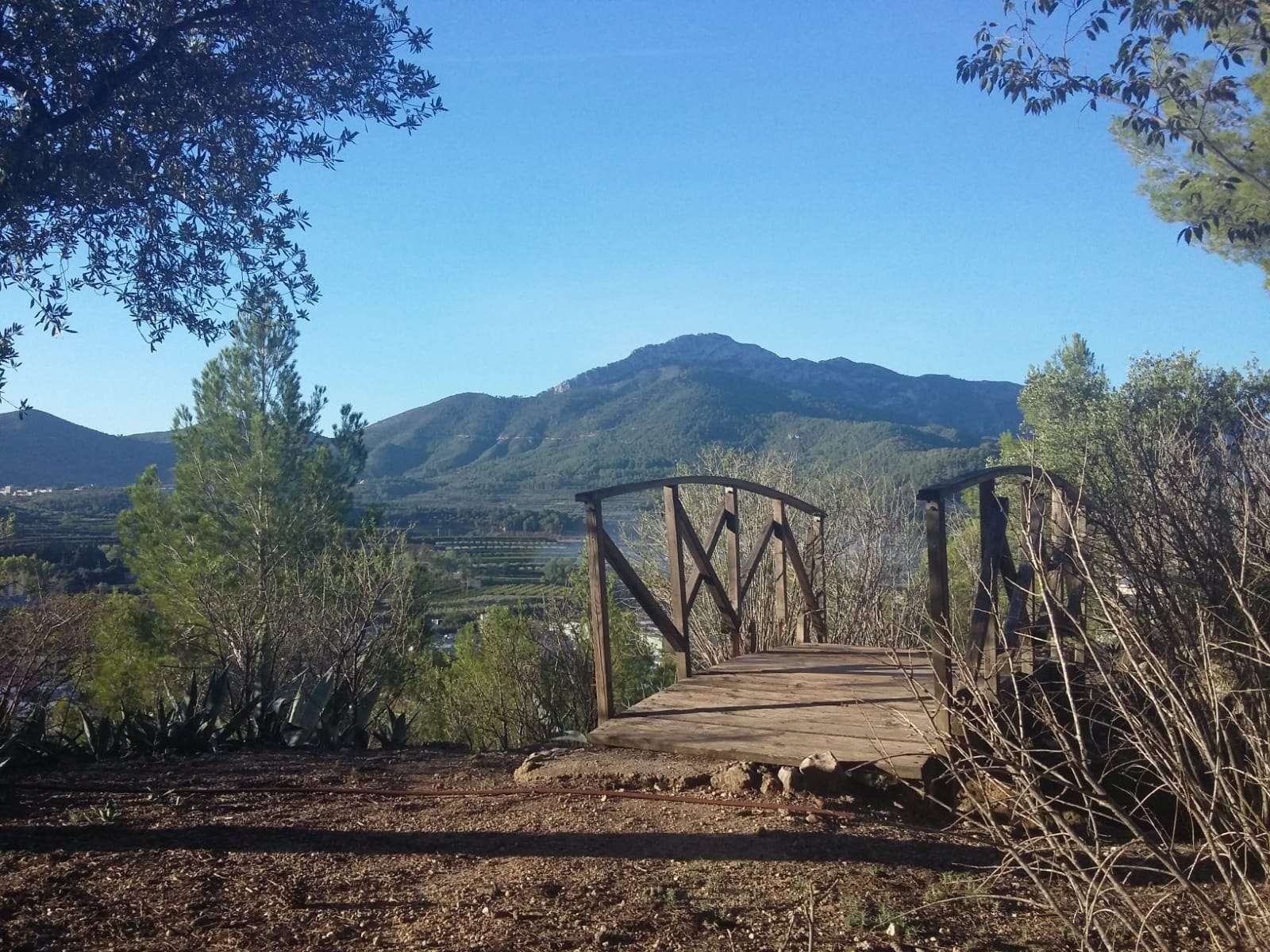Castello de Rugat
Perched on the side of a hill, which has the Ermita sitting proudly on top, Castello de Rugat, is a traditional, authentically Spanish small town. A world away from the crowds of the cities and beach resorts, it is an ideal place to reconnect to nature and enjoy everything this wonderful region of Spain has to offer.
If you arrive on the sweeping CV60 road from the coast, the town is obvious from a distance. The striking 371-metre hill on which the Ermita sits can be seen from several miles away. However, as you approach the village it is overshadowed by the dramatic mountains of Sierra de Benicadell behind it.
The town itself sits 320 metres above sea level, and is located at the eastern edge of the Albaida Valley (La Vall d’Albaida), just 15 miles inland from large coastal resort of Gandia.
The mountains to the south form a natural border with the province of Alicante and are covered with pine forests, shrubland and olive trees.
To the north and west are plains and rolling hills, much of which is farmland consisting of fruit and almond trees.
The whole area is covered by numerous walking and cycling routes. These vary greatly in difficulty but there are routes to suit most ability levels.
Sitting conveniently close to the CV60, a well maintained, main arterial road that is rarely busy, the town is easily accessible by car. The CV60 connects the AP7 and A7, the two motorways that link Alicante and Valencia, and the town is almost equidistance between them.
The airports of both cities are a little over an hour away, roughly 63 miles/100 kms. (See ‘How to find us for more information).
The Ermita or Hermitage of San Antonio and Santa Bárbara
A visit to the Ermita which sits on top of a hill on the western edge of the town is a must for every visitor. Its elevated position means it has an excellent viewpoint over much of the valley and to the mountains beyond. On a clear day Xàtiva castle can be seen in the far distance, sitting proudly bridging two hillside ridges.
The best way to reach the Ermita is by the narrow, cobblestone, pedestrianised street of Calle de L’Ermita. As you climb the steep hill up to the top you will pass the white stations of the Via Crucias, depicting events in the life of Jesus, and catch views across the valley. This route is a popular, regular stroll for local inhabitants, especially in the early evening. We try to do it at least once a week, and the views always remind us how very lucky we are to live here.
Once you reach the top of the hill, stop to admire the Ermita itself but also explore the area around it.
At the back of the building is a flat, grassed area used by the locals for various celebrations. The protected land surrounding the Ermita has various levels and areas to explore, amongst which are scattered stone tables and benches for picnics, along with water fountains and other recreation facilities.
If you visit the Ermita early in the morning, go quietly and keep your eyes peeled. You can often spot red squirrels and may even be lucky enough to see one of the Hoopoe birds that regularly visit. Also, in early spring look out for wild asparagus, a popular delicacy with the locals who come back carrying handfuls.
For those unable to make the climb up the steep pedestrian hill of Calle de L’Ermita, or who wish to take a picnic up to the top, there is a narrow, paved road that circles round the back of the hill to the rear of the Ermita where there is a large carpark. You can of course also walk up or down this road to make a circular route.
Other things to see in the village
Castello dates to the time when the Moors populated this area, and therefore although it is a predominately a practical working village, there are some interesting sights to take in.
Take a stroll round the narrow roads of the old part of the village which it’s ancient houses, some with foundations dating back to the time of the Moors. Hidden at the back of this historical area are the remains of an Old Borja Palace which dates to the 14th century, two centuries before the Borjas occupied it. Although the palace has since been divided into several houses, the far end is now being restored and we are hoping it will in time be open to the public.
Other points of interest are:
– The Church & church square
– The old wash house (El Llavador) and water fountain (La Fuente)
– The 18th century domed oven/kiln (El horno)
– The medieval cistern on Calle de L’Ermita which dates to Islamic times
– The pretty, narrow plant lined street of Carrer de la Canyeta
– The small museum
– The simple bodega where you can buy local wine by the case.
Eating and drinking
The village has a choice of places to eat and drink scattered throughout the town. Please refer to the separate notes on ‘Eating & drinking’ which give more details.
In addition to the bars and cafes there is ‘La Cuina; (the kitchen) where you can buy freshly prepared food to bring home and eat. It is located in the centre of the village just round the corner from the fruit shop on C/La Font nr 4, and opens daily from around 11.30 – 14.30.
There is also a small kebab and burger takeaway shop, Poble Kebab & Mas, on C/ San Vincente 62 which opens Monday – Sunday in the evenings, from 18.00 – 24.00
